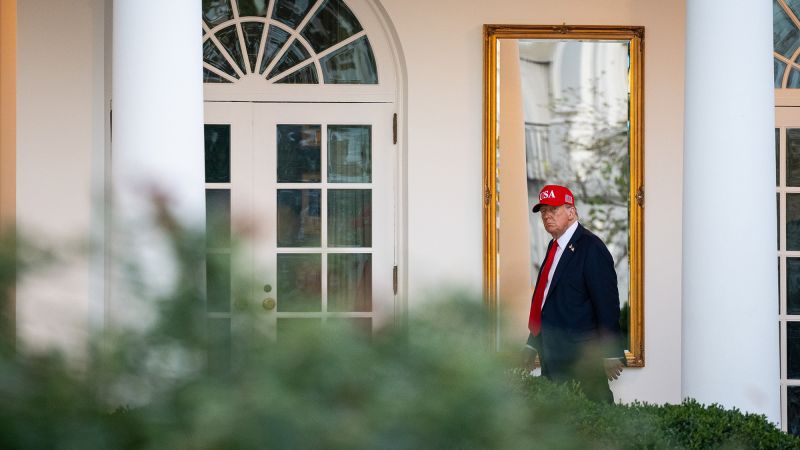
Fifty years ago this month, President Gerald Ford told New York City the federal government would not save it from financial collapse. The New York Daily News summed up Ford’s speech in an infamous front-page headline: “Ford to City: Drop Dead.”
Today, President Donald Trump is punishing American cities in ways that make Ford’s refusal to bail out New York look amicable by comparison. (Ford later approved federal loans to the city with strict conditions attached.)
But cities lack the power or resources to fight back.
They can’t stop Trump’s funding cuts, remove federal troops stationed on their streets or reverse damaging policies beyond legal challenges — despite being the economic engines of the United States. Last year, metropolitan areas accounted for 90.8% of the country’s economic output, employed 88.2% of Americans and housed 86.4% of the population. The income cities generate also supports rural areas and small towns.
There’s a long history of hostility toward cities in the United States, but “right now we’re at an apex of virulent anti-urbanism,” said Richard Schragger, a law professor at the University of Virginia who specializes in local government and urban policy. “What Trump is doing is affirmatively attacking and occupying American cities. That’s a much more hostile attitude” than Ford.
Trump is going after cities every way he can. He suggested using “some of these dangerous cities as training grounds” for US troops. He authorized the National Guard to Los Angeles; Washington, DC; Memphis; Portland; and Chicago, and threatened the same for New Orleans and New York City. The White House also recently canceled or delayed funding for critical infrastructure, transit and clean energy projects in Democratic-run cities during the federal government shutdown. That’s on top of the cuts to Medicaid, SNAP and other federal programs that will blow a hole in local budgets.
Cities are nearly powerless to stop Trump because they are considered “creatures of the state” in American law. They can’t raise taxes or borrow money without approval from states, and states often create policies that impose burdens on cities.
So if Republican Gov. Bill Lee of Tennessee, for example, encourages Trump to send federal troops to Memphis over the objections of the city’s Democratic mayor, Paul Young, Memphis is powerless to stop it.
“It’s three tiers — federal, state, local — and we’re in the lowest tier,” said Brett Smiley, the mayor of Providence, Rhode Island, who is also on the US Conference of Mayors’ advisory board. “Each step you take down that rung limits your options and your authority.”
“We will never be able to backfill the scale of cuts, depending on what happens at the federal level,” Smiley added. “We also don’t have all of the legal tools necessary to resist some of these federal actions.”
The White House did not immediately respond to CNN’s request for comment.
Creatures of the state
Cities are never mentioned in the Constitution and have no official place in the US system of government. Over time, this has left their role open to interpretation.
“We don’t have a clear, rationally-planned system of designating what powers cities do and don’t have,” said Clarissa Hayward, a political science professor at Washington University in St. Louis who studies democratic theory and urban politics. “It’s a system that evolved over time in circumstances that have nothing to do with the challenges cities are facing in 2025.”
Cities are still constrained by a legal doctrine from the 1870s known as Dillon’s Rule, named for a judge in Iowa, that said states control cities. Most states adopted Dillion’s Rule in the nineteenth century, although a few like California, Oregon, and New York empower cities to set their own laws and manage local affairs, a principle known as home rule.
Many states exert tight influence over cities, however, even passing legislation in recent years that preempt cities from adopting their own policies on issues like immigration, gay rights and the environment. For example, Texas passed a law in 2023 that prevented progressive cities from enacting legislation that didn’t align with the conservative state legislature, dubbed the “Death Star” law by opponents.
Eighteen of the 20 largest US cities have Democratic mayors, and Trump has “figured out how to exploit this bizarre legal morass that we have,” Hayward said. “One of these things that can be exploited is blue cities in red states.”
Cities are often blamed for national problems like homelessness and crime. But they don’t control federal funding for housing assistance or set national gun laws.
Cities also have limited ability to solve these problems since they don’t have direct control over the resources needed to tackle them. Roughly one-third of cities’ revenue comes from federal grants to states that are then doled out to cities.
“The problem is that cities have responsibilities but not power,” said Richard Briffault, a law professor at Columbia University who studies state and local government. “Cities have to absorb the costs of poverty. If a lot of people can’t pay their rent or access healthcare, the consequences will show up at the local doorstep.”
Providence Mayor Smiley said the Trump administration’s policies on trade, immigration and energy are already hurting his city. Tariffs on lumber have increased construction costs, and immigration raids have hurt local businesses and caused children to stay home from school.
“Everything that happens at the federal level eventually trickles down to the street level,” Smiley said.
Although Smiley is a Democrat in a blue city, he said wants to collaborate with the Trump administration to build more housing, improve public safety and other bipartisan issues.
But the administration’s approach is making a strong partnership difficult, he said.
“The thing that has been challenging at this time with the administration is the unpredictability,” he said. “Things are being done to cities, not in partnership, but rather to us against our wishes.”